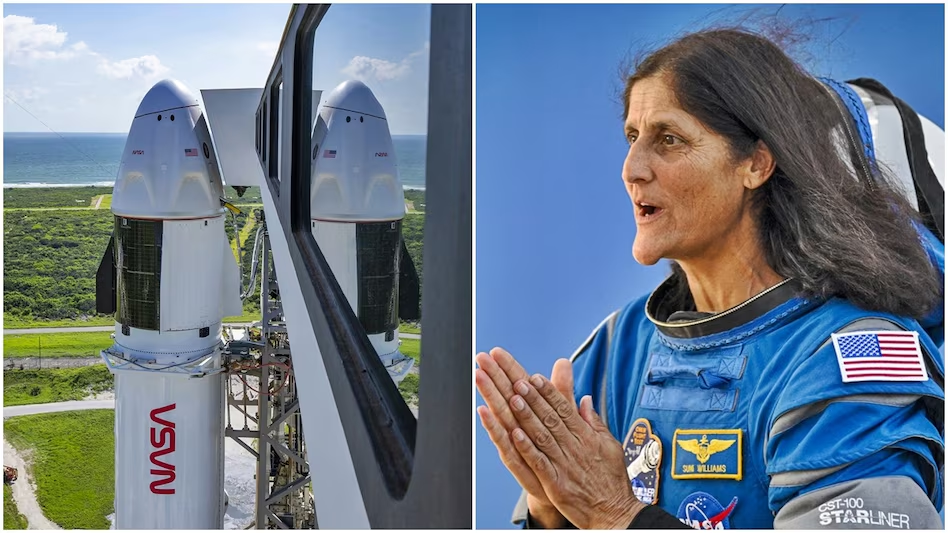The Reason for Sunita Williams's 2024 Space Mission
The media once again took notice when seasoned astronaut Sunita Williams visited the International Space Station (ISS) in 2024. This mission, which she completed in tandem with Boeing's Starliner spacecraft, is a significant accomplishment for her illustrious career and shows how space exploration is still progressing. But in 2024, Sunita Williams went back to space for what reason? Let's investigate the causes of her travels.

Sustained Participation in Space Research
Since her maiden space flight in 2006, highly experienced astronaut Sunita Williams has played a significant role in NASA's space missions. Her goal for 2024 is to keep up her commitment to human spaceflight and space exploration. She has the most spacewalking and ISS time records with over 322 days spread across several missions.
At a pivotal moment when NASA, Boeing, and other international space agencies are growing their operations aboard the International Space Station, is the 2024 mission. Williams plays a vital role in research, knowledge advancement, and technology testing that will be essential for future deep space missions, including those slated to visit the Moon and Mars.
Advancements in Technology for Spacecraft
The main goal of Sunita Williams' mission in 2024 is to carry out more spacecraft testing and validation. This mission demonstrates Boeing's commitment to building a reusable, trustworthy spacecraft that can carry people to and from low Earth orbit. NASA's Starliner and SpaceX's Crew Dragon spacecraft are part of the Commercial Crew Program. The program's goals are to lessen reliance on foreign spacecraft and improve American spaceflight capabilities.
Sunita Williams is a seasoned astronaut with invaluable experience operating complex spacecraft, making her the perfect candidate to test and enhance the Starliner's functionality. Future commercial spaceflight, in which private companies will be major players in missions to the International Space Station and beyond, will be heavily influenced by the spacecraft's performance. Science and Research on the ISS Conducting important scientific experiments aboard the International Space Station (ISS) is a primary goal of Williams' 2024 mission. The International Space Station (ISS) provides unique conditions for scientific research that cannot be duplicated on Earth, acting as a microgravity laboratory. Among the many studies that Sunita Williams and her fellow astronauts will partake in are those pertaining to human health, biology, physics, and material science. Understanding the effects of prolonged exposure to microgravity on the human body is one of the potential medical discoveries that could result from these studies. This is important because astronauts will be spending a lot of time in space in the future on missions to the Moon or Mars. Getting Ready for Space Missions Additionally, the mission is essential to NASA's preparation for upcoming deep space missions. NASA's Artemis program depends on the knowledge and expertise gathered on board the International Space Station (ISS) in order to bring people back to the Moon and eventually Mars. Williams' mission in 2024 advances NASA's deep space exploration objectives by testing vital technologies that will be utilized in upcoming trips to far-off worlds, such as space habitats and life-support systems. Motivating the Upcoming Generation of Adventurers Sunita Williams's mission for 2024 is also largely motivated by her inspirational role. Her presence as one of the most seasoned female astronauts in NASA history and one of the few astronauts of Indian descent encourages young people everywhere to seek professions in STEM fields (science, technology, engineering, and mathematics). Her 2024 arrival on the ISS serves as a reminder that space exploration is about more than just scientific advancement—it's also about the spirit of adventure and pushing the envelope of what's conceivable in humankind. The Goal of the Mission In 2024, Williams became a part of an important mission at the International Space Station (ISS) to further research and technology. This trip's primary objective was to carry out experiments in a number of fields, such as biology, physics, and space medicine. The project's goal was to aid in the creation of solutions for long-term space habitation and the potential for deep space exploration, including prospective missions to Mars. Conclusion The objectives of Sunita Williams' 2024 mission to the International Space Station are a mix of technological, scientific, and exploratory. Her flight aboard Boeing's Starliner spacecraft serves as a demonstration of the progress made in human spaceflight and adds to significant research that will influence space exploration in the future. Williams remains an essential member of NASA's ongoing space exploration and universe-uncovering team, whether she is testing spacecraft, conducting experiments, or mentoring the next generation.